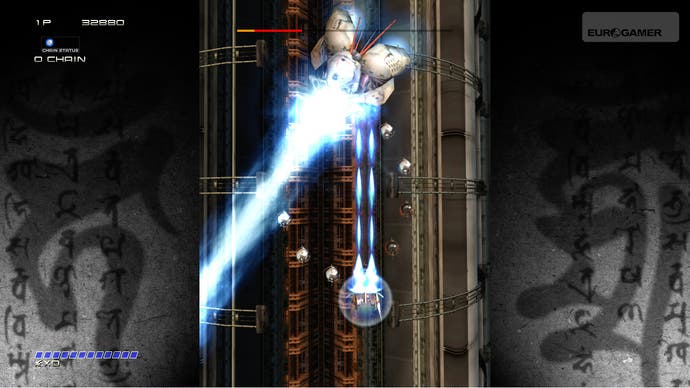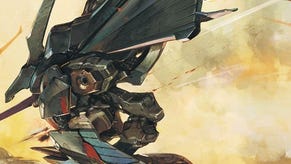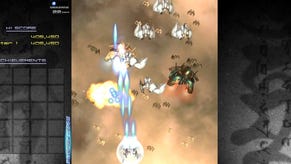Ikaruga
Radiant.
Let's suppose you know nothing about Ikaruga. Let's assume that developer Treasure, forbear Radiant Silvergun, director Hiroshi Iuchi and No Refuge are all names and phrases that carry no weight or significance to you. This is a good place to start because, as with the re-release of any classic game, it's easy to get caught up in the context, the history and the memories and lose sight of the fact that all videogames live or die in the now.
And if you do get the references; if you can one-credit the game blindfolded using only your sphincter; if the mere mention of its name fills your heart with Dreamcast swirls and warm nostalgia; or if you're approaching this review not as a prospective purchaser but as an inspector, clipboard and beady eyes checking every consonant for the shadow of an error the way only a snooty Japanese shmup aficionado can... Well, try to imagine you know nothing about Ikaruga and discard the context, the history and the memories: that way you might get to fall in love all over again.
Ikaruga, like all the very best arcade endeavours, is easy to grasp and near-impossible to master. The simplicity derives from the fact that its mechanics are quite literally black and white. Everything in this slick, confident shoot-'em-up - the enemies, the bullets and the paintwork on your ship - is one of two colours. One button-press switches your ship between them: black, white, black, white.

While black you fire black bullets that tear white enemies to shreds but only gently damage opponents that share your shade. Flick to white and the reverse is true. Additionally, rather than taking damage from enemy bullets of the same colour as yourself, you store them up. Collect enough and you can deploy the tracer tendrils of a smart bomb. In this way you have direct control over what is and isn't a threat on the screen at any one time. Flip the switch and it all changes, friends become enemies, enemies become friends. In the relentlessly prescribed field of videogame design, this is rare freedom indeed.
It's a good idea (one Treasure had already explored a little in the SEGA Saturn's Silhouette Mirage) and, it transforms what would otherwise be a short, sharp, orthodox vertical shooter into an elaborate twitch puzzle. Herein lies the game's clever: every encounter with a group of enemy ships forces a critical decision to either take the long easy route (by matching their colour) or the short difficult one (by opposing it). There is only one combo mechanic to master and it's straightforward and elegant. Shoot any three of a kind followed by any three of a kind: black, black, black, white, white, white.
But for all the system's fresh inventiveness, it is also an idea that overwhelms the experience, stifling many of the other elements that define shoot-'em-ups. While you fire a solid stream of bullets, dodge enemy fire and target weak points, your constant attention is drawn and held by the core conceit. Where are the best places to switch up to maximise the combo meter? Are my reflexes good enough to dodge this stream of black bullets as a white ship or should I take the slower, safer route for fewer points and lesser glory? These questions complicate and crowd your mind as you play, drawing the game away from a pure shoot-'em-up experience into something altogether different and inscrutable.










